How to Stop an Armored Vehicle using QRF Infantry Tactics
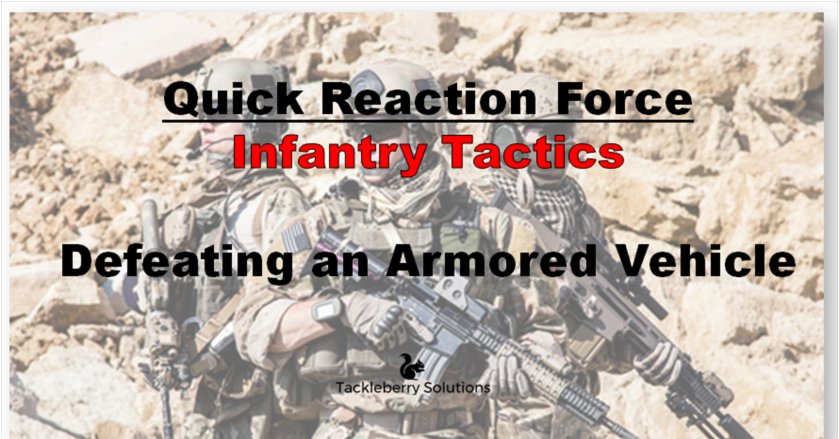
Discover how armored vehicles work, what their weaknesses are and how to stop them using limited assets and resources. *Note* These are wartime tactics only
This article is part of a series we are using to teach QRF Infantry Tactics. Here is an outline of the free lessons. They are numbered in the order they are taught in the printed book.
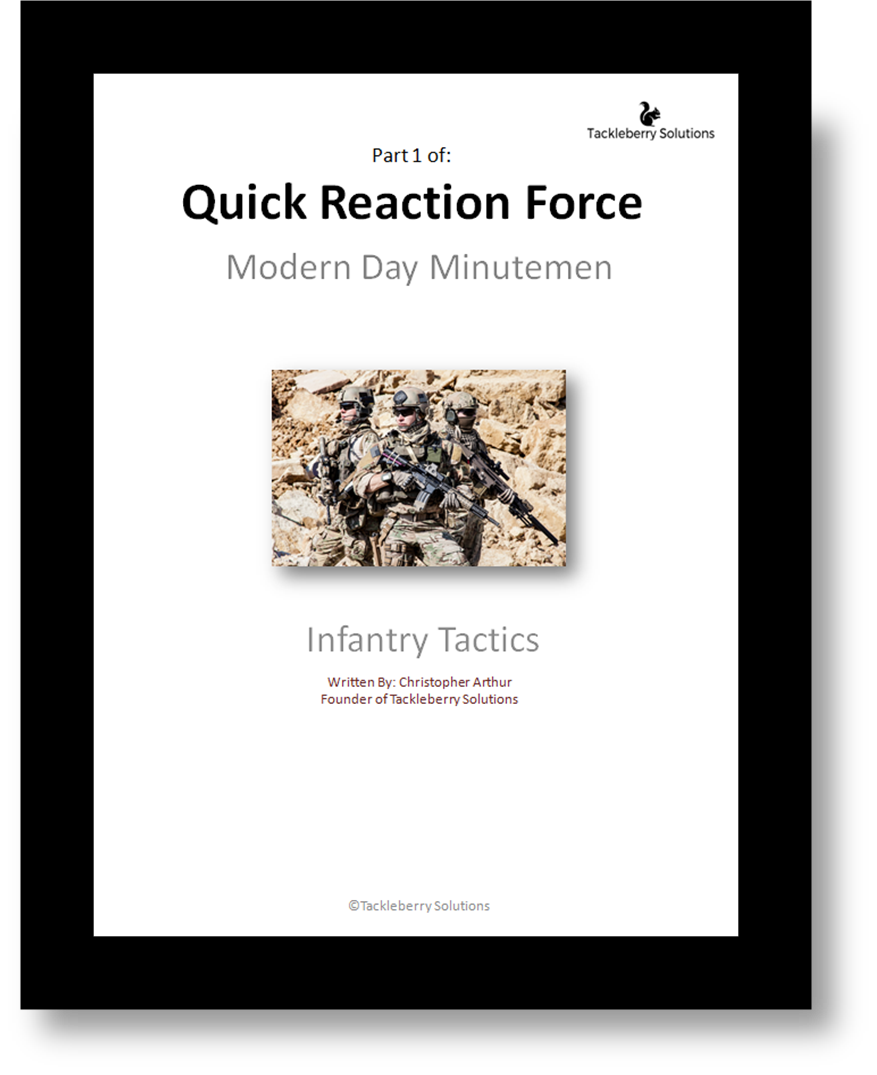
- How to Form Your Own Platoon
- How to Travel During Wartime Without Getting Ambushed
- Hand & Arm Signals - Communicate Silently
- Prisoners of War
- How to Remove the Injured From Battle
- Reaction to Contact (How to Respond if You Get Attacked)
- How to Stop an Armored Vehicle
- Convoys and Obstacles
- How to Identify, Locate and Avoid Landmines
- Fighting Back: How to Ambush Your Enemy
- Fighting Back: Tactical Formations
- Breaking Contact (How to Retreat)
- How to Conduct TCPs (Traffic Control Points)
- A Letter to the Commander (How to Keep Your Men Alive)
- A Story of Battle (What a Real Ambush Looks Like and How I Lived Through It)
Introduction - Armored Vehicles
*Important Note* This is lesson 7 of our QRF Infantry Tactics series. Click here to read the article on lesson 1.
Below you will see a summery of the article, "How to Stop an Armored Vehicle" Each section is linked so that you can go straight to the topic you're interested in learning about. Use the "Back to Top" button on the bottom right to navigate back up to the article summery if you want to view a different topic. Or you can simply scroll up or down if you want to take the time to do so.
If you have any questions at all about the tactics or methods mentioned in this article, you can ask by either leaving a comment at the bottom of the article, sending us an email to prepare@tackleberrysolutions.com or you can even call Arthur directly at 919 - 223 - 7741.
Article Summery - Armored Vehicle
How to respond to enemy fire (reaction to contact.)
Video, How to Stop an Armored Vehicle
How to Stop an Armored Vehicle
And now it gets even crazier. When you are under attack against an armored vehicle, just remember that every armored vehicle has a soft spot, finding it is the issue. Most Armored personnel carriers are like an MRAP or Humvee, they only have armor that protects the occupants. Thus the motor is totally unprotected. (MRAP is similar to what law enforcement use.)
Attack the motor with a volley of rifle fire and it will become a sitting target you can attack at your discretion.
Tires are run a flat (i.e. they can’t get flat tires) so shooting at them won't do anything.
If you take off their radio antennas it will prevent them from calling for back up.
Side Note: It is standard practice for the military to do a “Dust Off.” This is where your vehicle has been immobilized and is covered with enemy combatants attempting to gain entry to kill you. Another truck comes into position and uses a small arms machine gun (M240/M249) to shoot the enemies on the other vehicle. Since they’re buddy's are inside, an armored vehicle the bullets from their truck will not hurt them. This can only be done with a .30 or .22 caliber machine gun. Any bigger and they risk killing those inside.
Armored Vehicles with Tracks
Tracked vehicles are very hard to destroy. However, immobilizing them is easy. Tracks are very sensitive. Turning sharply on a hard surface can pop tracks off. Sticking a metal pipe or hardwood tree in-between the track and where it meets the road wheel will cause the track to break or pop off. Thus the vehicle will cease to move. Getting inside, however, is a little harder.
You do this by using a charge (I’ll cover that later in improvised explosives) to destroy the vehicle. Place the charge over the back of the turret (this will detonate the ammo inside the track...think of a tank.) Even if there is no turret, the concussion wave will over pressurize the inside of the track and kill any inside. (So this same method is good for attacking armored personnel carriers also, think of an M113 or M88.)
Side Note: The road wheels on a tracked vehicle is a give away as to where the engine is located. The road wheel is directly in line with the transmission (see diagram), which is always attached to the motor.
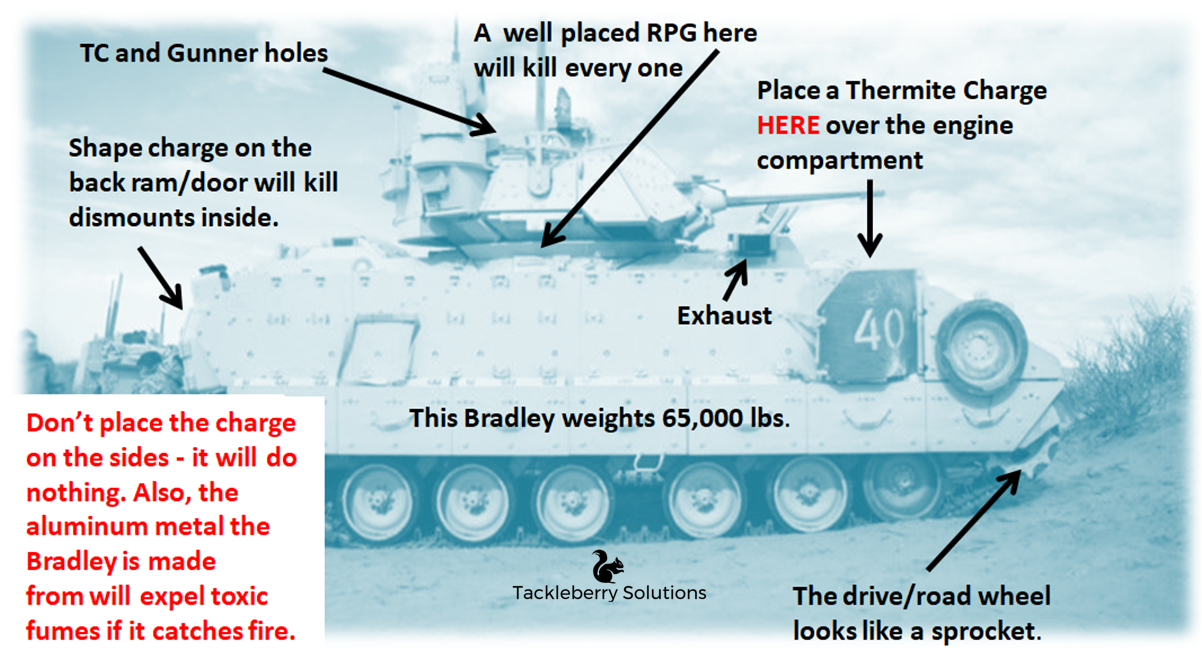
Other Areas to Target
Other areas to target are the fuel tanks and engine compartments on armored vehicles. Either one will start a huge fire quick if you use a Thermite charge on these areas. (Again I will cover this later in Improvised Explosives.) A Thermite charge can also be placed over the ammo rack. Either way, after placing the Thermite charge or shape charge, run like hell.
Side note: An M113 was originally used to carry troops and is currently used to extract the wounded. It was also used by the FBI to harass and destroy property at Ruby Ridge. The Bradley (Which I personally hate with a passion.) and the M88 where both used to harass and destroy property at Waco, TX.
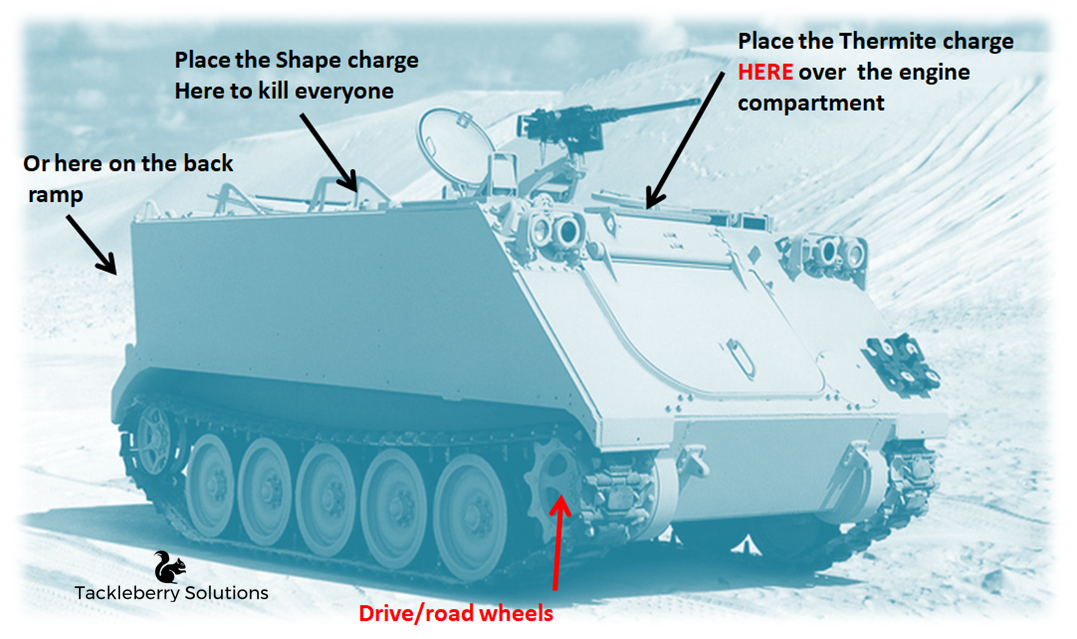
Getting Close to an Armored Vehicle
In order to get close enough to the track to place the charge on it, you either have to immobilize it or draw attention to something else. (I prefer to immobilize it.)
One way to immobilize it, is to use its weight against it. Like a Grizzly Bear, an armored vehicle is really heavy and as tough as nails. But if you weaken a bridge by removing its supports, the armored vehicle will collapse the bridge due to the excessive weight. (Just imagine being inside a steel box as it falls 10 feet.) If you will pay attention to every bridge and road, you will see that it has a weight classification on it. If you exceed the recommended tonnage weight, you risk destroying the road or collapsing the bridge.
Side note: Nothing sucks worse than being stuck in an armored vehicle in the desert. The metal just intensifies the heat. Add the body armor and it’s a wonder anyone survives at all. So use the sun to your advantage. Immobilize and destroy their ability to call for help or run the engine. And just sit back and drink a smoothie and get a tan. Meanwhile, they are sucking and slowly dying from the heat. It won't be long till someone opens the door
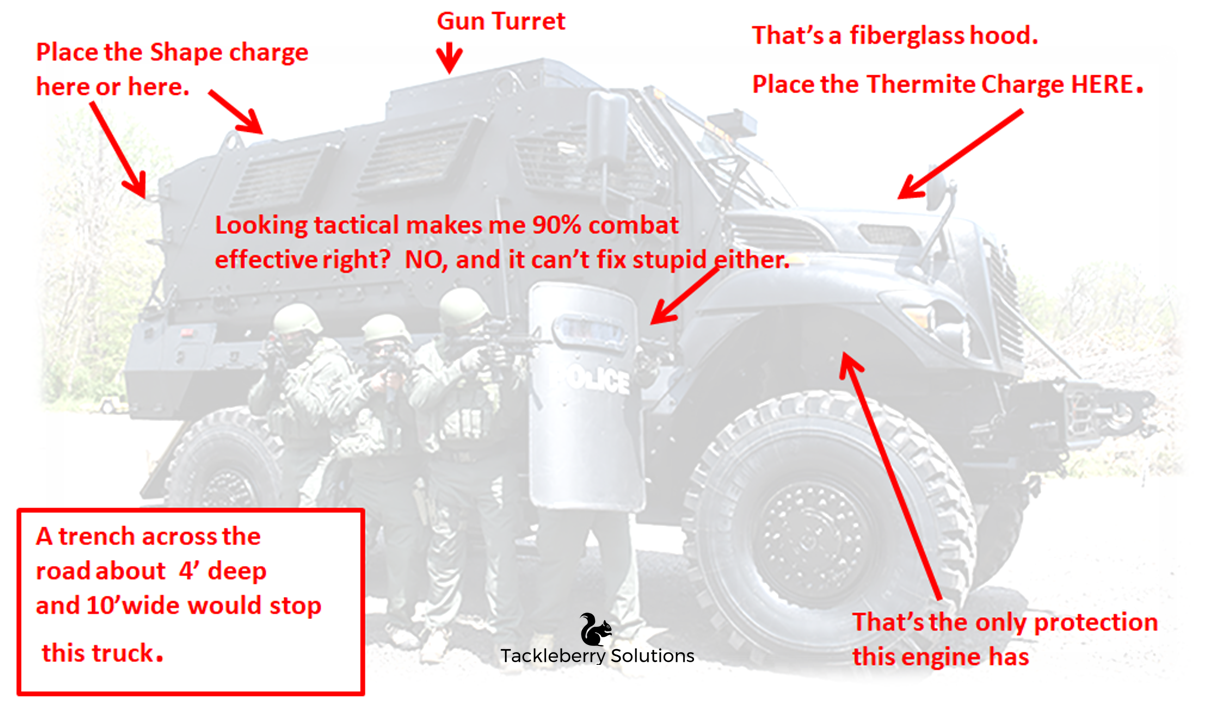
Off Topic Add On
Freaking ballistic shields are a bad idea. Sorry you SWAT guys. They are only rated to stop most pistol rounds and a blast form a shotgun. While it might stop shrapnel from a frag, it wont protect your legs. Furthermore, it ain't going to help you from an AK or AR fire from the other end of the hall. Finally, being able to lay down suppressive fire with a long gun is better than having a shield. As shooting back at them will make them stop shooting at you and take cover. “The sword is mightier than the shield." The shield may protect you, but the freaking sword (or in this case, a gun) will make it all stop. So don’t ever hide behind one and don’t be intimidated by those that do. Ok, back to our regularly scheduled broadcast.
Side note: The MRAPS are designed to take blasts from all sorts of charges. The bottom of the vehicle forms a V. When the shrapnel from a charge hits it, it redirects it away from the occupants. That is also why the truck sits so high off of the road.

Get to Them First
Another good way to take out an enemy armored vehicle is to hit them while they are inside their FOB. They are often unguarded and thus easy targets. Using Thermite charges will destroy an entire platoon or company of tanks to include Bradleys, MRAPs, etc. Look at thermal imagery pictures of armored vehicles and you can easily locate the motor and fuel tanks.
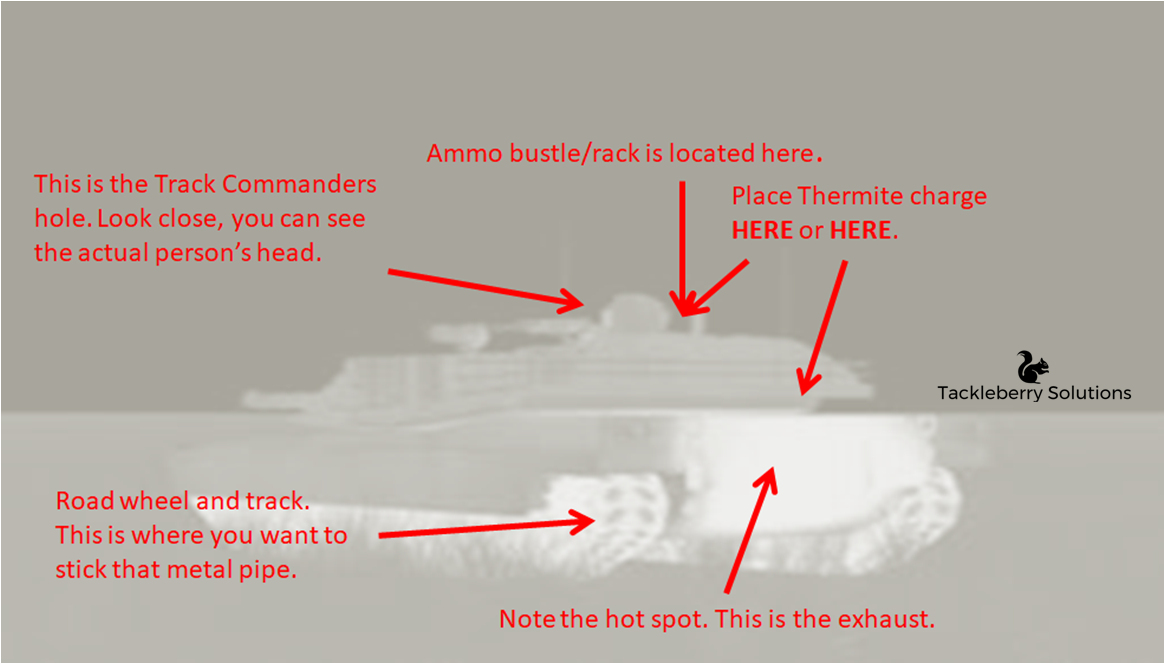
Up Next - Convoys and Obstacles
Now that you've learned how to stop an armored vehicle - it is time to learn about convoys and obstacles. Click here to read the next article.
Definitions/Terms
2-3 Second Rushing- “I’m up, he sees me, I’m down.” That what you say to your self as you run from one cover/concealment location to another. This is done so you can advance or retreat without getting shot. By the time the enemy gets his sights on you, you’re hitting the ground. Then your buddy jumps up and runs.
360 Security- Always maintain the ability to fire and scan in every direction. The fewer men you have, the more vigilant they must be in monitoring their sector of fire.
AUW – Advanced Urban Warfare are advanced tactics for fighting within an urban environment.
Baseline of Fire- a position usually formed by the Alpha team. All members come and form a line facing the enemy. Remember to keep 360 security. Then they use suppressive fire to keep the enemy heads down and attention on.
Bound and overwatch- One soldier shoots with suppressive fire while the other advances onto the enemy’s position, or retreats from their position. Often using 2-3 second rushing.
Breaking contact- basically you realize that you have bit off more than you can chew and wanta get the hell out of there alive. There are formations and tactics to do this properly. Bound and overwatch, Auzzy Peel, and Rolling Peel.
Casualty Collection Point- Predesignated location just outside the contact area of a raid sight, or locations along the route of travel, in which you will collect your wounded for treatment and stabilization for movement to a medical facility. Can also double as rally point.
CCT- Casualty Collection Team. A small team that usually consist of 3-4 guys that collect the dead or wounded during the fight. This is seen more often in AUW (Advanced Urban Warfare).
Choke Point – This is much like a fatal funnel, it is an area that you have no choice but to go through due to the natural terrain features. Example: a bridge over a large river.
Commo - communications
Concealment- A position behind an object that cannot stop bullets or fragmentation, but can act as a visual block. (i.e. tall grass)
Convoy - A group of vehicles traveling in the same direction for the same purpose.
Cover- A position behind an object that can stop bullets, fragmentation, and visual contact. (i.e. Rock)
cross-load ammo – This is like socialism, but with ammo. You will compile all of your ammunition and distribute it equally. This is typically done after a firefight.
Direct Fire- Precision incoming fire. Think J-Dam off a F-15 or rifle fire.
Dismounts – Men that get out of the vehicle and push forward on foot to either engage the enemy or clear an obstacle.
EPT- Enemy Prisoner Team. Similar to the CCT, but not as caring. They secure and search the POW again and move them (wounded or not) to the POW security point for yet another search, treatment, and evacuation for further interrogation. CCT can double as EPT.
Far Ambush- an attack that is outside of hand grenade range.
Fatal Funnel – This is like a choke point. It is an area that gives you no choice but to go through in which you have no option to go left or right. The only way out would be to push forward or go backwards.
Flanking- Moving toward the blind side of the enemy to gain tactical advantage.
FLIR Imagery – This is an advanced thermal optic used by drones and other aircrafts to spot personnel, weapon cashes or anything else that gives off a heat signature. This is very difficult to avoid.
Force on Force Training - Split your platoon in half and have one side defend, while the other side attacks. Be sure to use actual projectiles such as air soft, paint ball, or SIM rounds.
Formation- A specific placement of men to gain maximum tactical advantage.
Forward Operation Base (FOB) – Is a city within a city. Much like a standard military base here in America. Just this base is totally geared for war. Round the clock guards, stationary and roaming, TCP, etc.
Grenadier - Is the guy that carries the grenade launcher and grenades. Second most important weapon system in a fight. Can cause mass casualties with only one shot.
Indirect Fire- incoming fire that is from an arial weapon. Think artillery, mortars, or grenade launcher.
Intervals – distance between each person
KIA- killed in action.
KISS – Keep it simple stupid
Lift and Shift- A command given by team leader to fire high and away from your approaching troops. This keeps enemy’s heads down without hitting friendly forces.
Limit Of Advance – When advancing through an objective, this is an area where you stop your assault.
L-Shape- L shape ambush is when you literally place your men in a form of an L and let the enemy walk into your cross fire. With this shape, there is no way you can hit each other. But your enemy has nowhere to go and is getting hit from what seems like all sides.
LT – Lieutenant, the lowest rank that a commissioned officer can hold in the military. In my experience they are usually “GOOD IDEA” fairies and cost you more sleepless night and pain than any one else.
LOA- Limit of Advance. Tells the men in your section to stop movement, and commander of other section to start their assault.
LZ – Landing Zone for an aircraft.
Murphy’s Law – An old army wise tale. Anything that can go wrong will go wrong, it’s Murphy’s law.
NCO – Non-commissioned officer, where the rubber meets the road, the backbone of the military. The guy that puts foot to ass, trains the men, keeps them alive in a hot zone, and makes heroes out of LT’s.
Near Ambush- An attack that is within hand grenade range. I.E. I can throw a hand grenade and it kill the enemy.
Neighborhood Guardian – Is like the stationary or roaming guard. The watchdog of your community.
Package - A term used for the person/thing that is being protected or delivered.
Pat Tillman – Former NFL player that joined the Army Rangers after 9/11. Was killed in action during a firefight in Afghanistan. Stood up from behind cover in front of his team and was hit by friendly fire.
Platoon – Is a group of men that comprise of two sections of about 6 soldiers. They are headed by the platoon Sergeant and Lieutenant.
Platoon Leader Recon- when the LT, Senior, and a radio guy move forward to observe the objective while leaving the main body behind . This is done to prevent too much noise from excessive movement.
Point Man – The man that is at the front of your formation, this is typically a sniper.
POW- prisoner of war.
Prone - The most stable firing position and the safest during a firefight. Just lay down.
precision fire – Shooting carefully to aim and actually hit the target instead of just spraying lead.
QRF (Quick Reaction Force) – Modern day minutemen. You can also think of them as emergency responders during war.
Rally Points - Predesignated location for your men to fall back to. This would be used as a gathering point after a raid, breaking contact, or that one member that gets separated from the group. Can also be used as check points along the route of travel to ensure you are on course.
Ranger File – Think ducks in a row. Walking in a single file line. This is used in areas with thick under brush.
Reaction to contact – Reacting to enemy shooting at you. Depending on the situation, you will react a certain way.
RPK – Russian version of a squad automatic weapon, typically carried by their machine gunners.
Sector of Fire- The area in which you are responsible for and have free range of engagement.
Sig acts – Significant activities within the last 24 hours. Firefights, enemy activity, etc.
SLLS - Pronounced Seals, stands for Stop, Look, Listen, Smell. Basically just be observant, you might just find something.
Sniper- an enemy sharp shooter that uses concealment to hide their position while delivering procession fire on enemy.
Stationary Guards – Guards that sit in one location observing their sector of fire.
Stockholm's Syndrome- A state of mind prisoners can develop in which they sympathize with their kidnapper and no longer try to escape.
Suppressive Fire- one round a sec. This is designed to keep the enemy’s head down while your other section advances onto their position.
S vest - Suicide vest. A vest that is rigged with explosives, designed to be worn by individuals willing to blow themselves and others up .
TC - Truck or Track Commander
Thermal Sighting Imagery – Optic system used to see day or night based upon your body’s heat. Does not work through glass or any kind of obstruction. Also faulty in the desert at high noon as everything is hot.
Triage – This is where you assess the wounded in mass amounts so that you know who to treat first that have a better chance of living.
Train to Failure – Train as if everything is failing you. Radios die, weapons jam, no support, medic is dead, etc.
Victim Detonated – Basically a booby trap that is detonated by the victim themselves be it via trip wire, thermal imagery, pressure plate, etc.
VIP - Very Important Person
Wedge Formation - Formation used when in the open. Designed to look like a wedge. Gives you more of a chance of surviving a sniper ambush.
Side note: When you get into contact with the enemy just yell out your commands. The enemy knows you’re there anyways. Be sure that the command is repeated back to you by the rest of the group. This is to ensure they understood the order and to give anyone that didn’t hear it a second chance at hearing the order. Furthermore, dig deep, grab your balls and sound off. Use your man voice. When all hell is breaking out around you and guys are dying, no one is going to hear or listen to you if you sound like freaking Mickey Mouse.
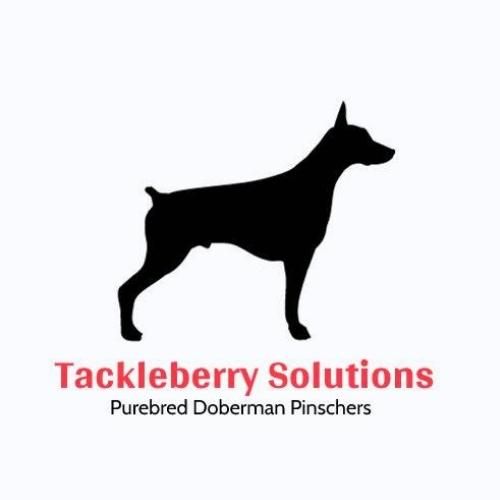
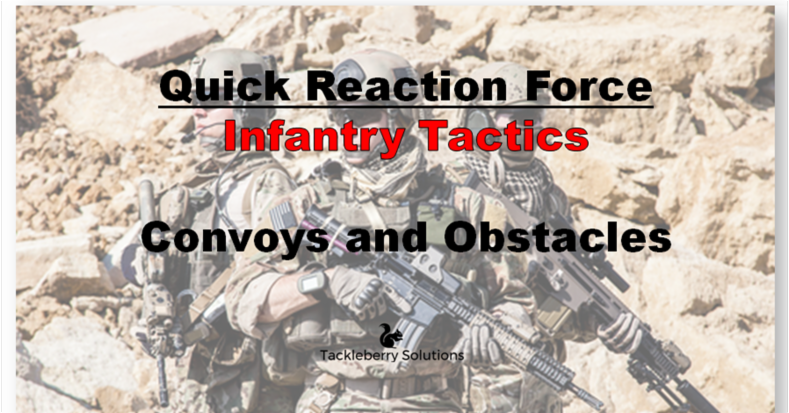

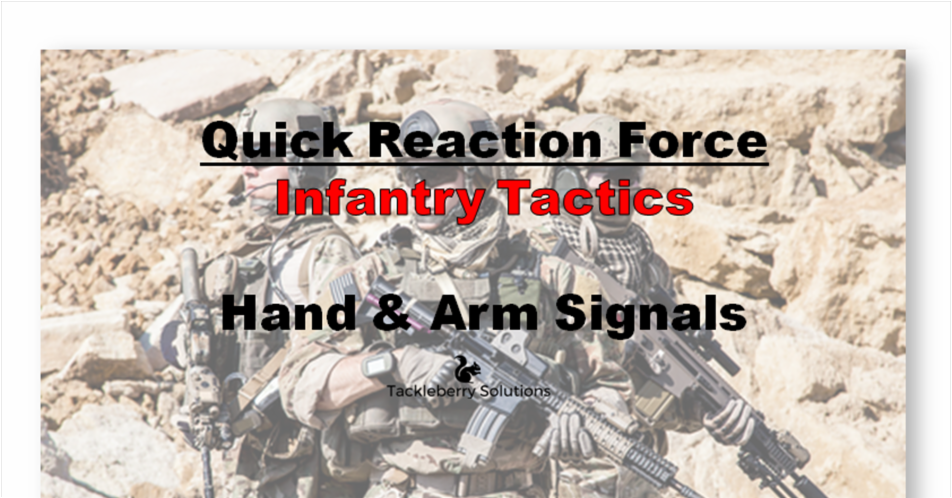
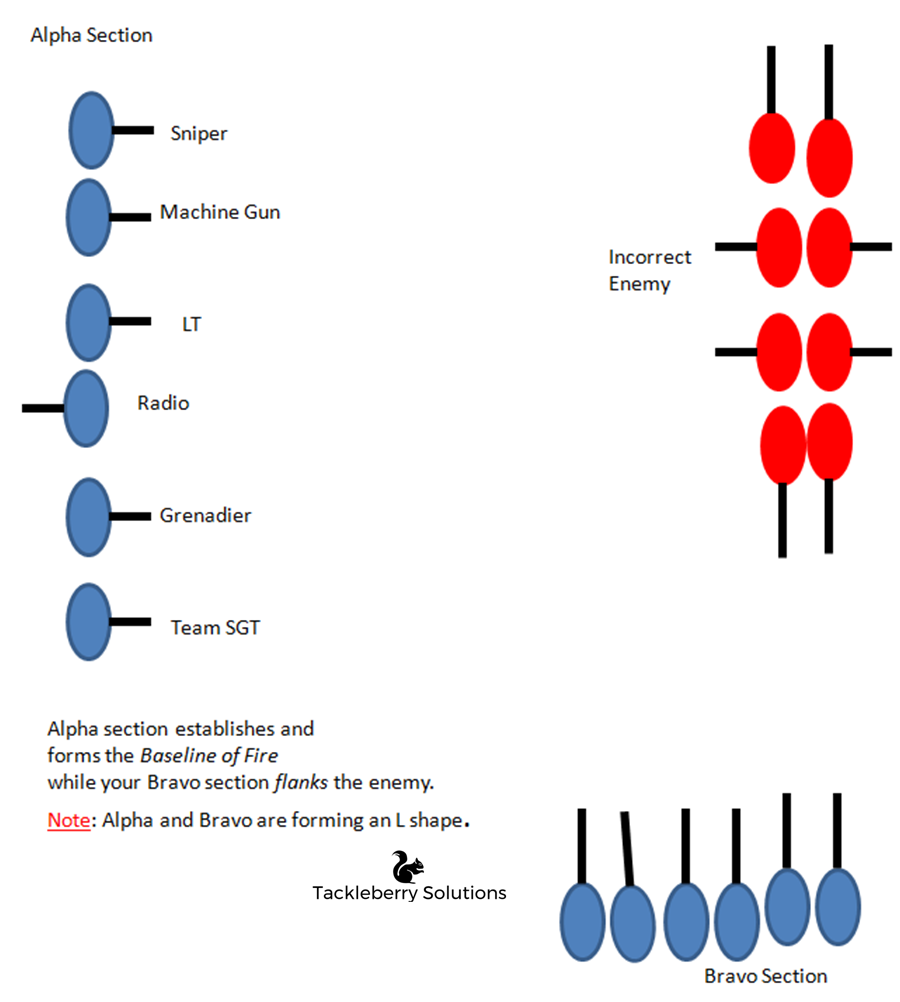
I would like to go more into detail about the weak points of the MRAP. Included would be a detailed cutaway of the MRAP, (Cutaway layers if you will).
That type of information is classified. If I were to expose that, I would be committing treason. However, the knowledge I’ve already shared with you will work if done correctly.